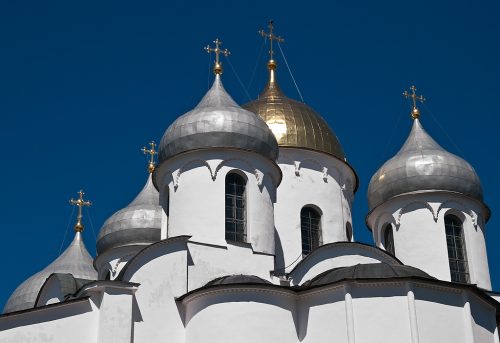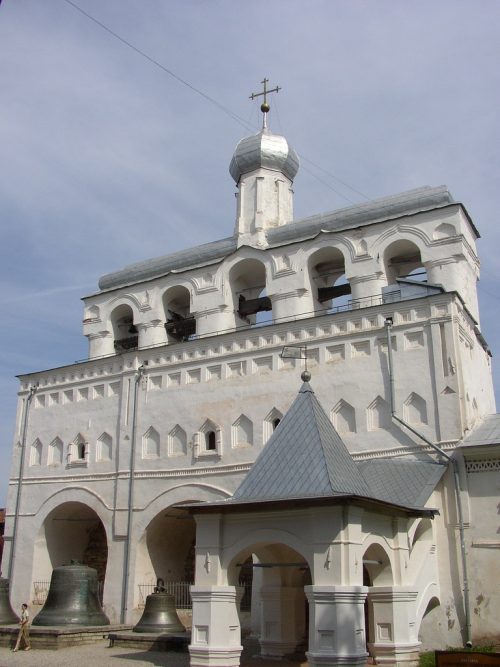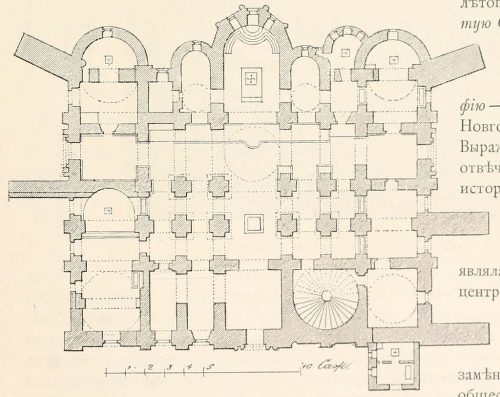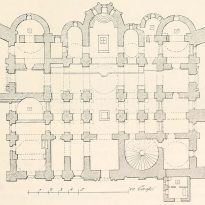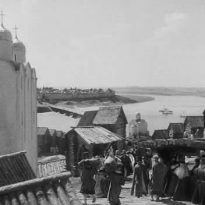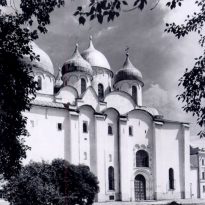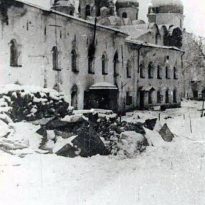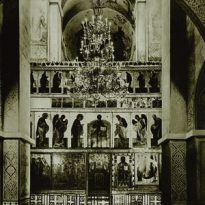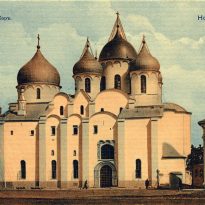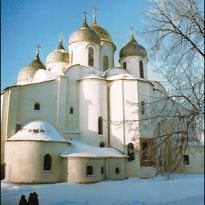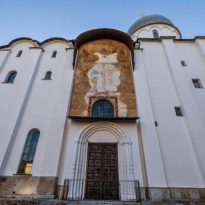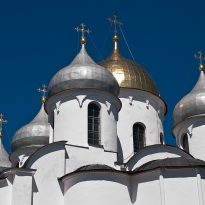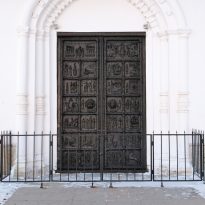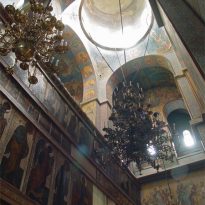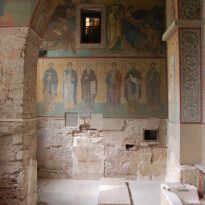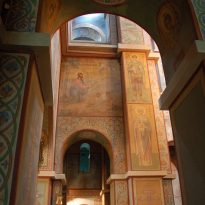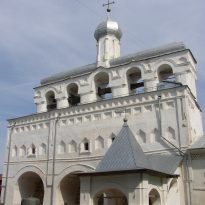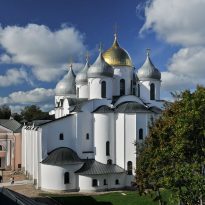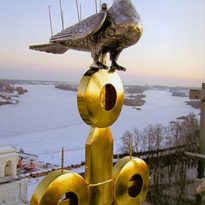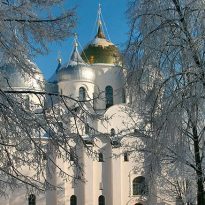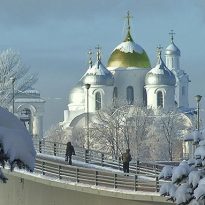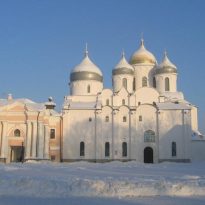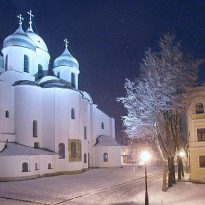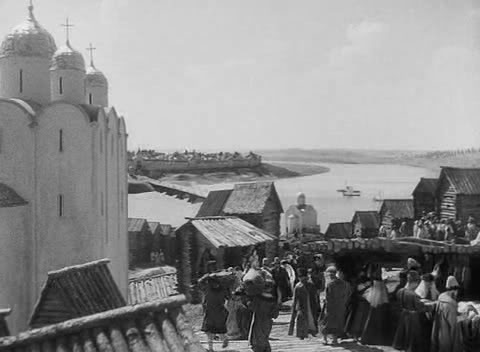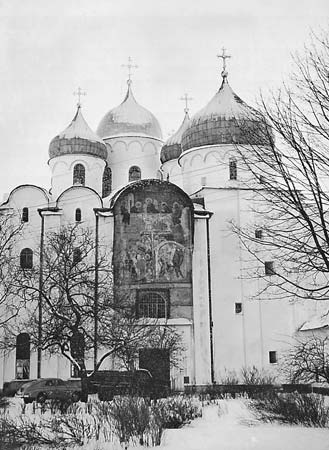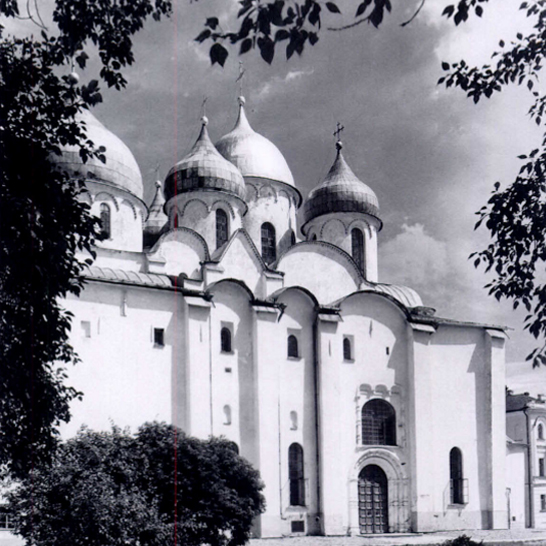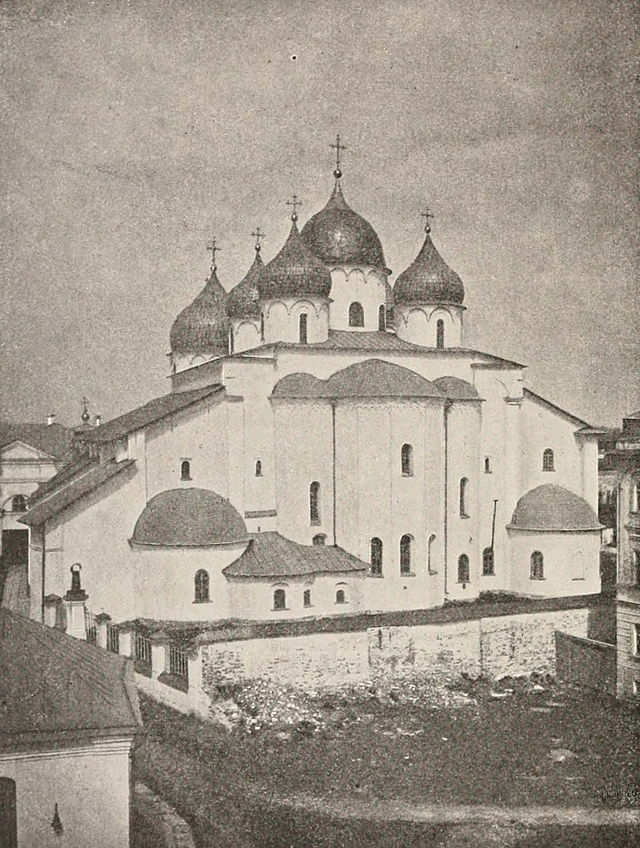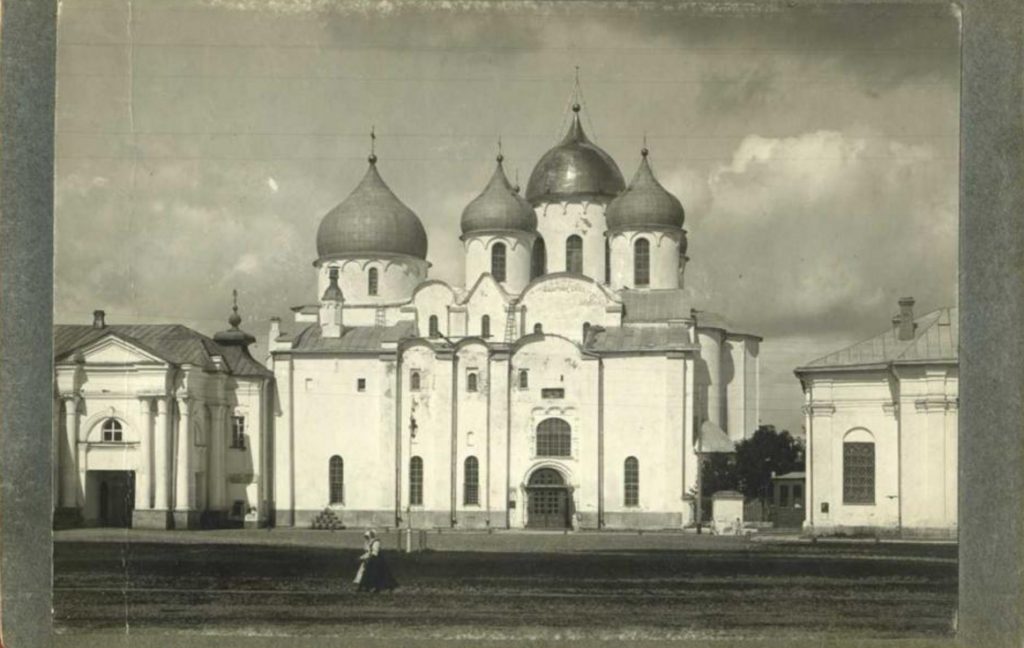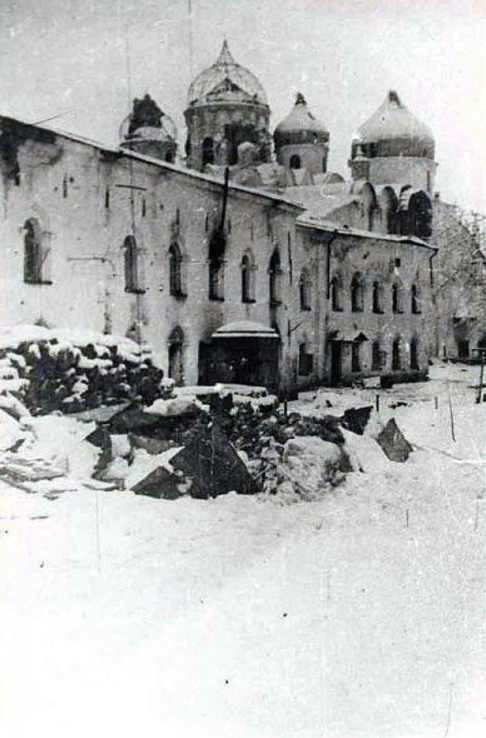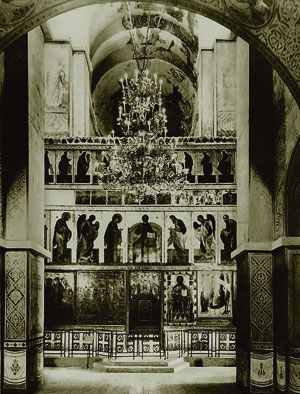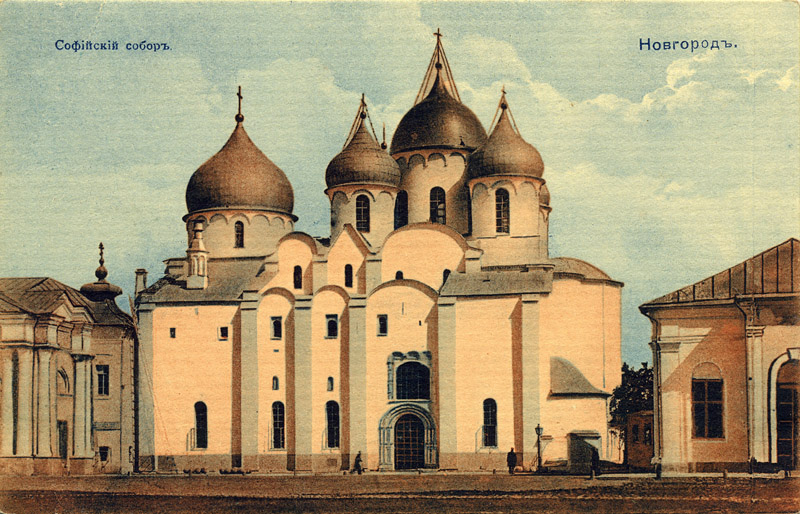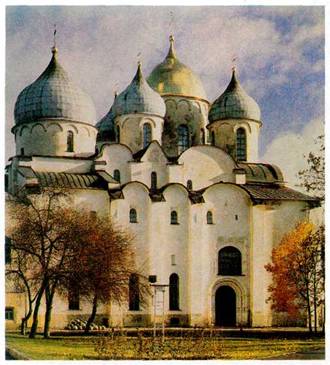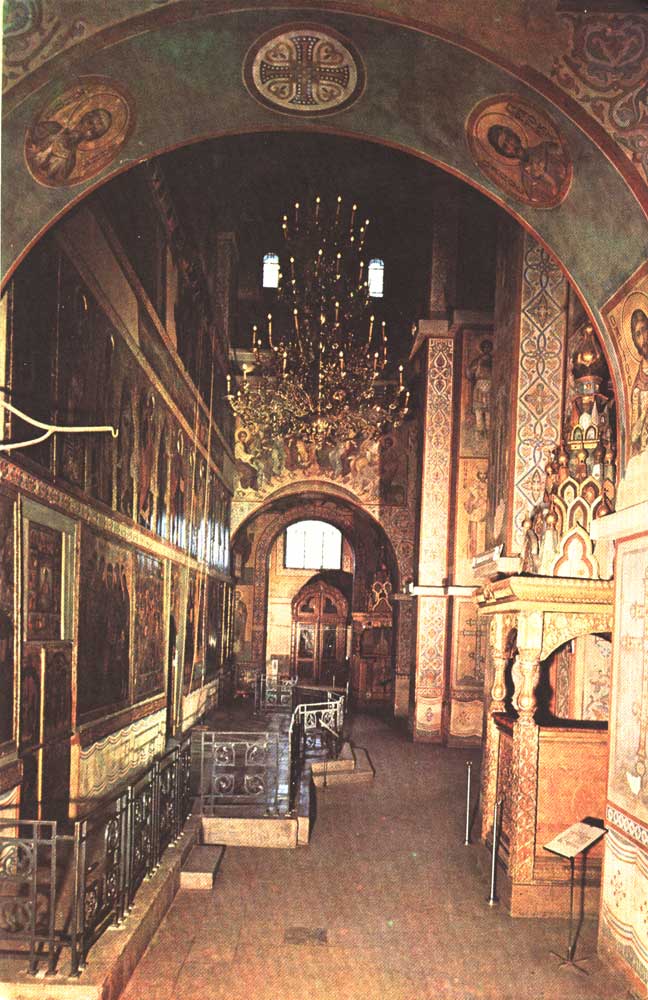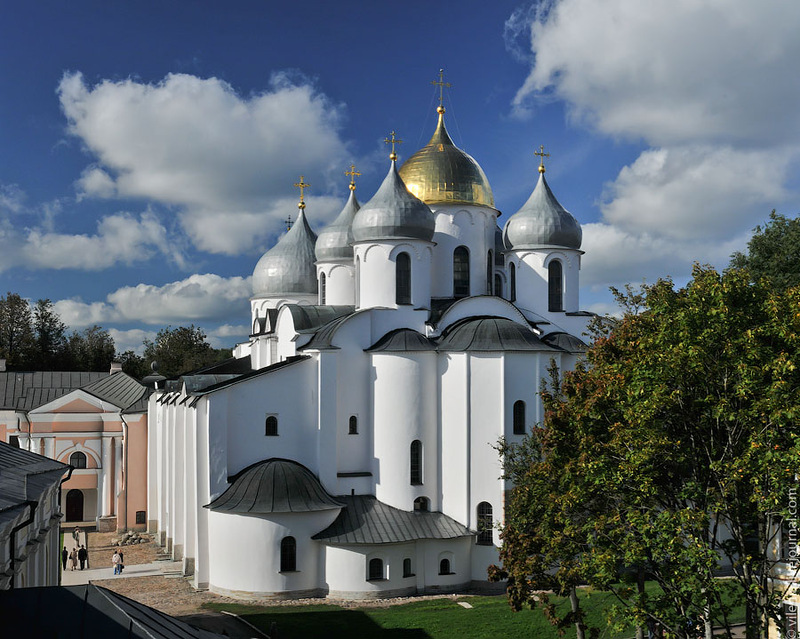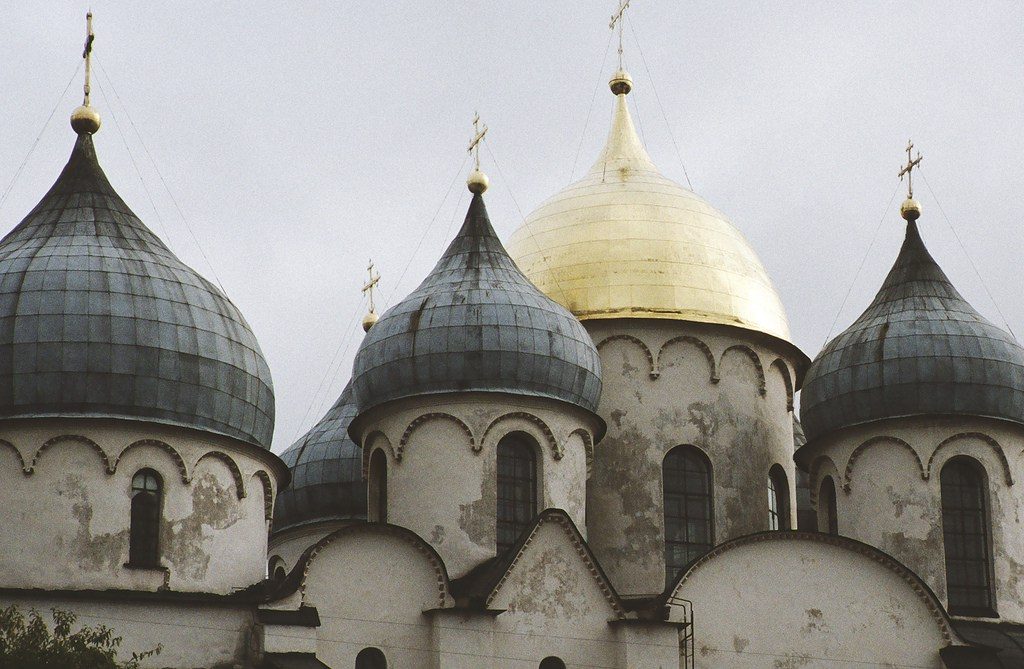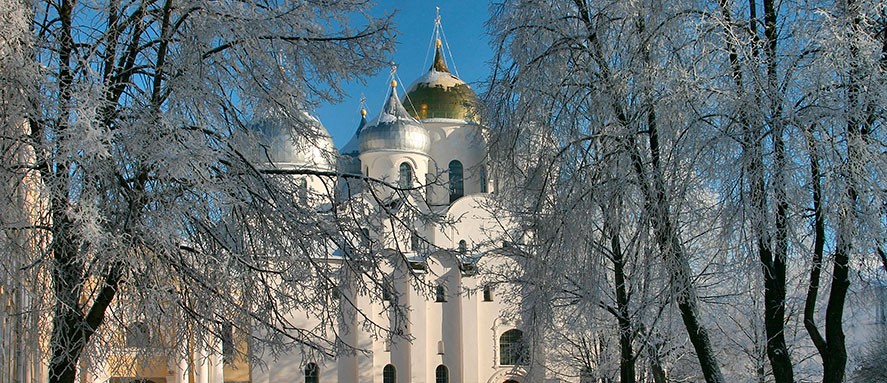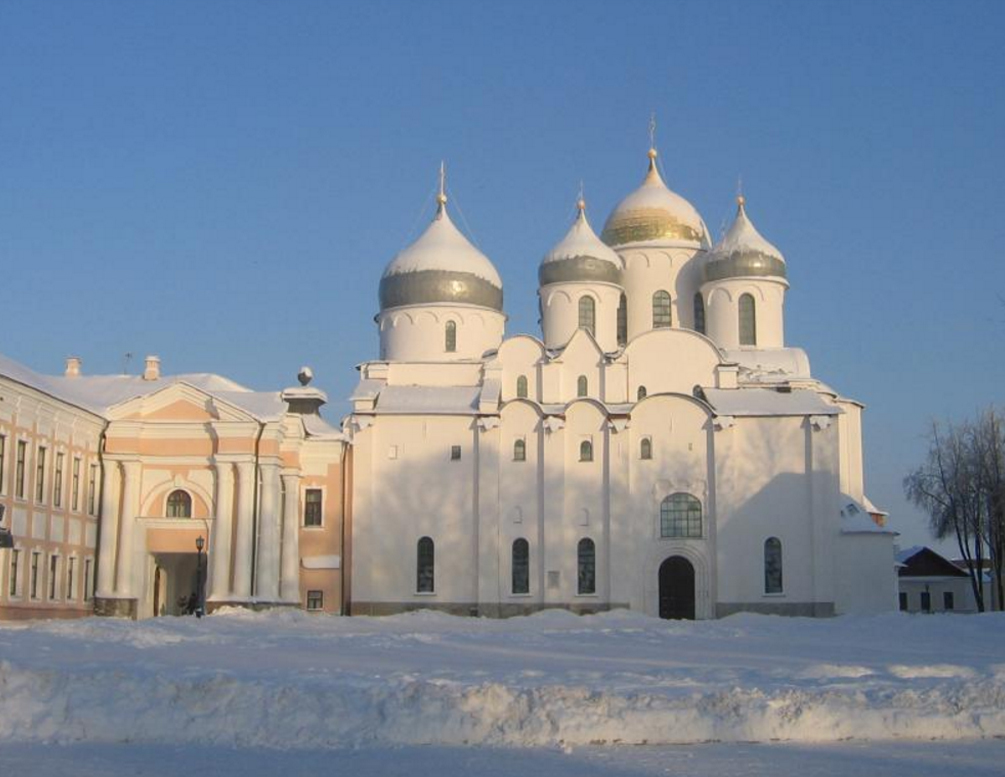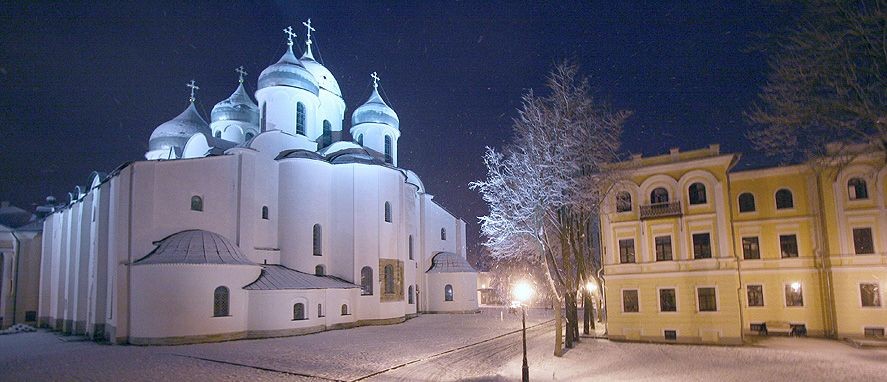Cathedral of Saint Sophia in Novgorod

Introduction
The Hagia Sophia of Novgorod, which was built between 1045 and 1052, although it was inaugurated in 1050, is the oldest cathedral in Russia. It was built by both Russian and Byzantine masters who managed to combine both styles with the character of climates and peoples of the north. It became the only stone building in Novgorod at that time. As part of the historic center of the city, it was declared a World Heritage Site by Unesco in 1992. The Byzantine-style Cathedral was dedicated to Saint Sophia, although in the Orthodox tradition it is also known as “Holy Wisdom” (Holy Wisdom ), To remember the great churches of the same name in Constantinople and Kiev.
History
Built within the Detinets, it is one of the earliest stone structures in northern Russia, contemporary of Notre Dame in Paris and the cathedrals of Reims, Amiens, Bamberg and Naumburg. Its current height is 38 m, although originally it was higher, but its lower part was hidden by layers of earth that were depositing during the last nine centuries. The cathedral was built at the behest of Prince Yaroslav the Wise, his son Vladimir and Archbishop Luka of Novgorod. The last request of Yaroslav the Wise to his son was that the cathedral of Hagia Sophia in Novgorod was built as a token of gratitude to the Novgorodians who had given him so much support during his struggle for Kiev. Before the construction of the cathedral there was an old wooden church with 13 domes established in 989. Until the 1130s the new church, the main church of the city, served as a sepulcher of the Novgorodian princes. For the Novgorodians, Hagia Sophia became synonymous with its people, the symbol of civic power and independence.
The people of Novgorod, who at first resisted Christianity, under the reign of Vladimir soon embraced him wholeheartedly showing veneration for the cathedral of Hagia Sophia, especially when they saw how all Russia of Kiev was ravaged by the Tatars, while Novgorod was “mystically” protected. This is certainly a remarkable historical fact, and the Novgorodians attributed it to the special protection of the Holy Wisdom of God. The Tartars who had advanced on the city, they receded just before reaching it. It was also attributed to the protection of God and connected to the cathedral that in 1391 Novgorod was saved from a terrible plague that struck the region.
The Cathedral survived the Nazi occupation of the city but when the Spanish infantry arrived, he took out the great cross from the main dome of the church. In fact, until November 16, 2004, the cross spent 60 years in the Museum of the Military Engineering Academy of Madrid. In 2004, the Spanish Defense Minister, Jose Bono, returned it to the Russian Orthodox Church.
Location
The Cathedral was built in Novgorod, on the west bank of the Volkhov River, Russia. The city was the medieval capital of the Republic of Novgorod (Новгородская республика; tr .: Novgorodskaya respúblika) within the Detinets or citadel, in the territories of present-day Russia, 190km southeast of St. Petersburg and on the banks of the Vjojov river. The old Republic of Novgorod occupied from the Baltic Sea to the Ural mountains. Until 1478 the city was called Gospodín Veliki Novgorod, “Lord Novgorod the Great”.
Concept
The Cathedral of Saint Sophia in Novgorod is perfect from the architectural point of view. The architects of Byzantium and Kiev who designed it in the eleventh century managed to convey the essence of the Novgorodian character through this stone building, unique in its time. The limits of severity, the powerful reach of thought, and great strength are elements of the Novgorod culture. Hagia Sophia Cathedral of Novgorod differs from its predecessor in Kiev in that the building is more compact and “seems to reach the heavens”. Since the 13th century the cathedral was considered as the symbol of the city. A well-known saying stated: “Where is Santa Sophia, is Novgorod”. Such an attitude received further development in the early fifteenth century, when the central dome was gold, and a dove of lead, personifying the Holy Spirit, was fixed on the central cross. The 5 domes symbolize Christ and four evangelists.
The cathedral also differs from the Kiev cathedral in the nature of its images. In the latter both the exterior and the interior are much more complex, varied and pictorial. The one of Novgorod radiates a more severe, monolithic impression, more oriented to the characteristics of Constantinople, giving way to a laconic monumentalism.
Spaces
Exterior
The exterior of the cathedral is striking in its majesty and epic splendor evoking the memories of the glorious past of Novgorod and the invincible power. With its 5 domes its facade represented a gigantic mosaic of enormous and irregular plates of slabs and rocks. Formerly in some places, especially in the apses, the wall was covered with mortar, polished and softly drawn or the white colored slabs, slightly colored, to imitate the cuts of the brick. As a result, the facade was not white, as it is today, but multicolored. The game of stone, decorative painting and construction materials of various textures enhanced the impression of austere simplicity and introduced a quaint effect.
The cathedral has three entrances, in the south, the west and the north, of which the western one was the main, destined to the ceremonial processions.
Domes
The central dome of the church, with its golden cover is different from the others. The first Russian churches have helmet domes, the bulb domes begin to be built in Novgorod and later in the rest of Russia in the middle of the 12th century. The central dome of this cathedral dates back to the 12th century, while the later domes, later replaced, are typical of the 15th and 16th centuries. It is believed that the domes have acquired their present shape in the 1150s, after having been rebuilt after a fire.
In the early fifteenth century the central dome was covered with a golden patina and was added a central cross and a dove of lead that personified the Holy Spirit.
Doors
Much has been speculated about the origin of the main doors of the Cathedral of Saint Sophia. At one point it was thought that they had been brought by St. Vladimir of Korsun in Crimea as part of the apparent treasures of Korsun. There are still some objects of that treasure that can be seen, but the doors themselves have been replaced many times.
In 1335, Archbishop Basil donated a door, which was transferred to the residence of Ivan III in Alexandrov, near Moscow, at his request and that at the moment can be seen there. The gates found in Hagia Sophia today are gates of bronze which are believed to have been taken by the Novgorodian pirates in a Swedish town Sigtuna in 1187. These gates open only on special occasions.
Bell tower
The bell tower adjacent to St. Sophia dates from the 15th century and the clock tower of 1673. The separate towers are a loan from the sister city of Novgorod, Pskov, where the first churches were too small to support steeples. Musical instruments are not allowed in the services of the Russian Orthodox Church, and bells played a very important role in calling the faithful before service, during actual service and at their conclusion.
The bell tower is located to the southeast. This five-level tower rises above the walls of the Kremlin. In the lower part of the belfry there are five monumental bells. Another ten smaller ones were requisitioned during World War II and at the moment returned to the city, but installed in the monastery of Antoniev.
The first mention of the building dates back to 1437, when the overflow of the Volkhov River overturned the wall and the “kolokolnitsa” (bell tower). Two years later Archbishop Euphemy II built another bell tower on the site of the old. It was remodeled several times, so now only architectural and archaeological studies and images of ancient icons give us some idea of its initial shape. But no reorganization changed the essence of this structure as the main carillon of the city.
Inside
Inside of the cathedral is as majestic as its exterior. It is divided by immense docks in five corridors, three of which end in the apses of altar. In the southwest corner, inside the tower, there is a wide unusual spiral in the relatively small and modest buildings of the XII-XVI centuries. The two-story galleries extend along the south, west, and north sides of the building, with a stair tower built in the northeast corner.
Due to inclement weather in the area, much colder and more humid than in Kiev, the windows are smaller and narrower than in their namesake.
Fresh
The frescoes that adorn the church were painted over several decades. Works from the 11th and early 12th centuries have been discovered, although most of the original paintings have disappeared after centuries of renovation. In 1860 the church was repainted. A part of one of these frescoes is preserved above the main door.
Structure
The main structure of the cathedral consists of five naves with closed galleries behind the north, west and south facades. The Cathedral of Novgorod is smaller than its counterpart of Kiev, nevertheless both have a very similar height, reason for which the first shows a much more acute vertical development. Of the five ships, only the three in the middle have an apse.
The north and south galleries contain chapels at ground level and the west gallery includes a round tower with a staircase leading to the upper levels of all galleries, including the choir gallery, within the main structure. The proportional ratio of height in the area of the central structure in the cathedral of Novgorod is 1.5 times greater than that of Kiev. The emphasis on height is maintained in the interior, where the pillars of the main corridors rise directly to the barrel vaults without the visual hindrance of low arches frequently suspended between the halls of Hagia Sophia in Kiev.
Materials
The main material used in its construction was the stone obtained in the place. Because the construction of masonry was largely unknown in Novgorod before the middle of the eleventh century, to raise a cathedral of such size and complexity was necessary to bring teachers from other places, presumably from Byzantium and Kiev. The basic material for the construction of walls and pillars, however, was obtained in the Novgorod, field stone and frayed blocks of limestone mixed in a crushed brick mortar and lime.
Doors
The Gate located at the main entrance is known as Sigtuna Gate, brought in 1187 from the Swedish city whose name it bears, although it is also known as Magdeburg Gate by the place where it was made in 1050. The two leaves are decorated with biblical scenes And evangelicals made in relief with cast bronze. In the lower left corner there are engravings of the craftsmen who made it and an inscription with their Latin names: Riquin and Weissmut. The small central figure, judging by an inscription in Slav, is a representation of the Russian master Avraam, who joined the door.
In the cathedral there is another bronze door made in the 11th century, the Korsun Gate leading from the southern gallery to the side chapel of La Natividad. It was performed in Chersonesos, Byzantium and the legend tells that it was a gift from Prince Yaroslav the Wise to the town of Novgorod.
Frescoes
Most of the frescoes or paintings were made directly on the partially dried plaster and have faded over the centuries and the effects of some fires to the point that many of them can not be seen. Only the frescoes of Saints Constantine and Helen, remnants of the prophets in the central dome and on the altar, survive the frescoes of the saints Constantine and Helen, icons of enthroned Christ and the apostles Peter and Paul. In some corners appear decorations with mosaics, never comparable to those of the cathedral of Kiev.

